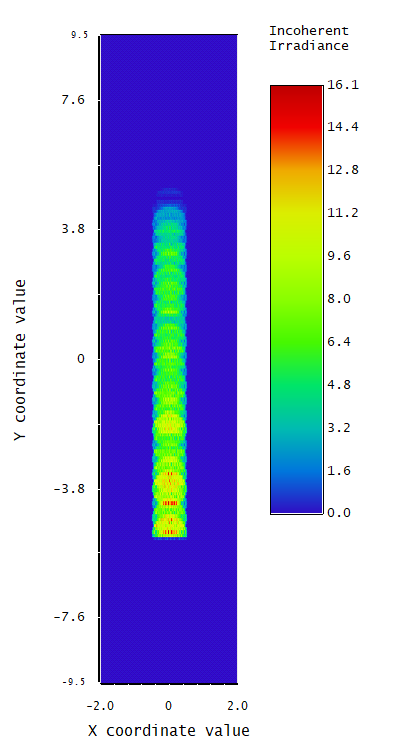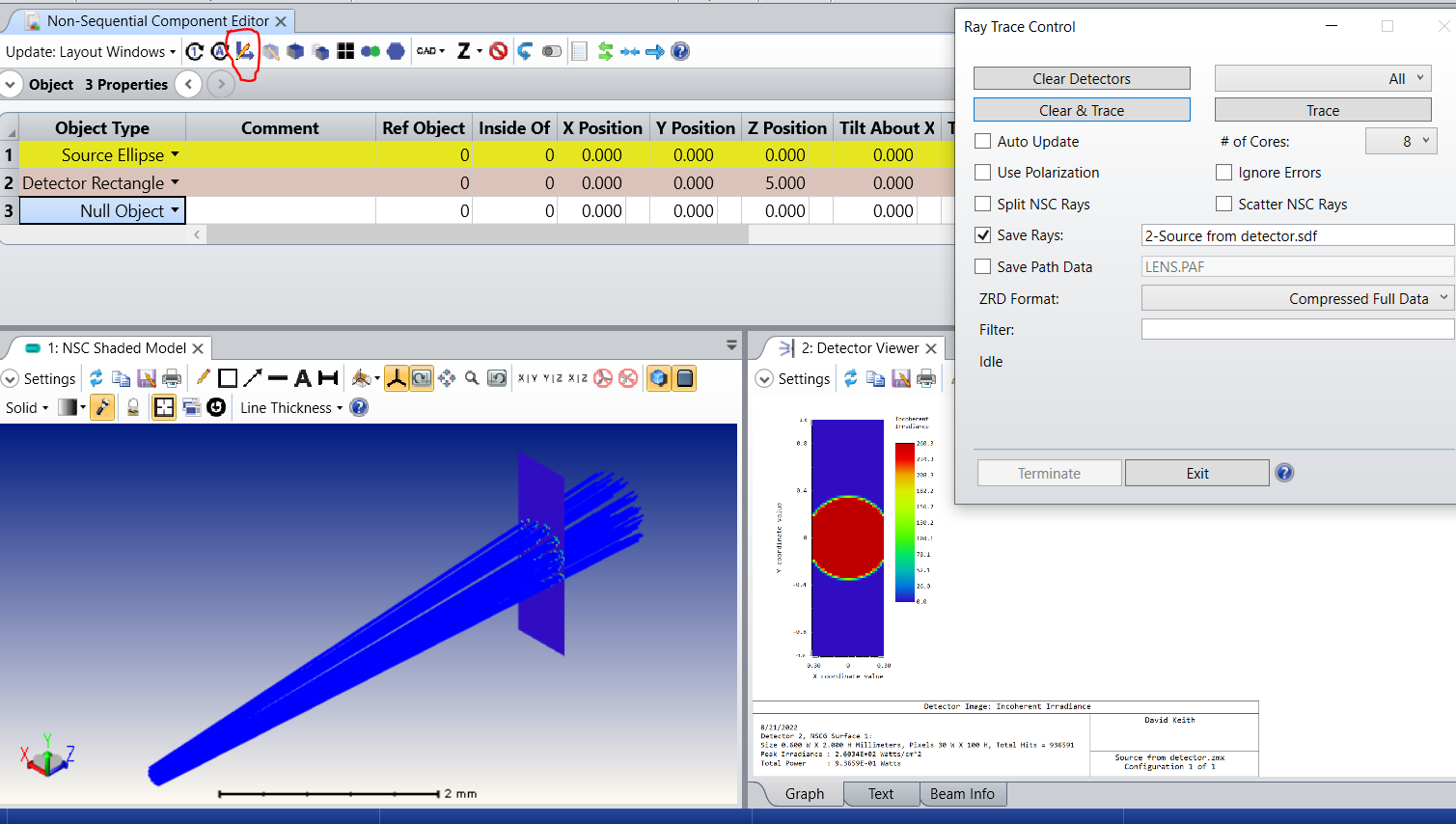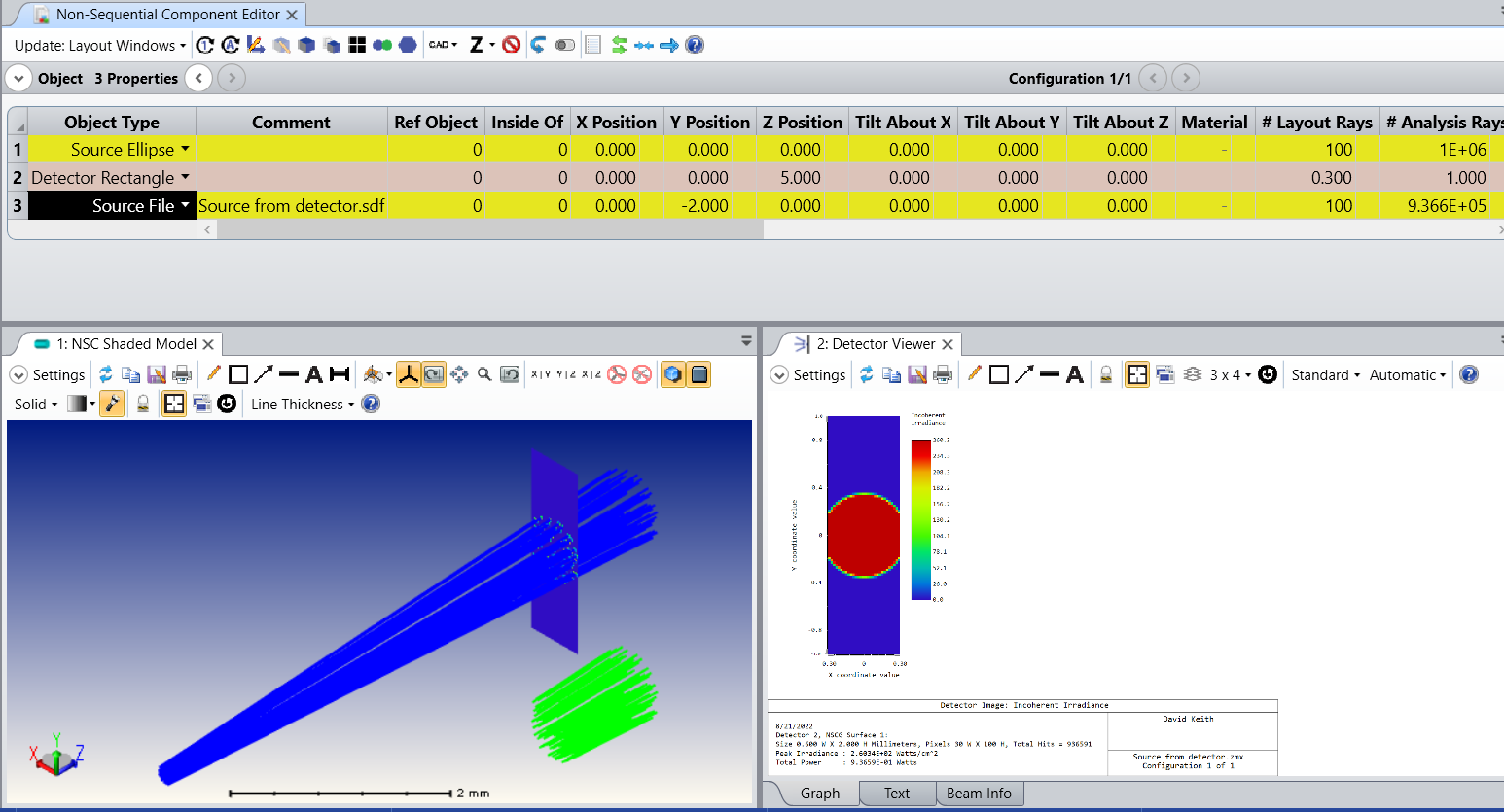Hi all,
Is there a way to use the data of “detector rectanuglar” as a new source?(see image)

Thanks,
Nadav
Hi all,
Is there a way to use the data of “detector rectanuglar” as a new source?(see image)

Thanks,
Nadav
Best answer by David
Hello Nadav,
Yes. There is a method for saving the rays on any object as a file and then using that file as the data for a Source File object. In the attached example, a Source Ellipse is used to illuminate a Detector Rectangle. A ray trace is run with Save Rays checked and the file name given as “2-Source from Detector.sdf”. The general form for that is n-filename.sdf, where n designates the number of the object for which rays are saved. Executing the trace puts the sdf file in the proper directory. The saved name does not include the n-.

Now that the sdf file has been saved, it can be used as a data file for a Source File object in any non-sequential lens design. In the example, I added a Source File object to the original design and gave it a displacement in Y so we could see the saved rays.

Notice that the rays from the Source File are emitted referenced to the same global position as they were saved at in the original trace. If you want the rays to be referenced to the global origin, then you can modify the original file to place the object on which rays are captured at the global origin. This is easily done with the Modify Reference Object tool in the menu bar of the Non-sequential Component Editor.
Enter your E-mail address. We'll send you an e-mail with instructions to reset your password.